In today’s day and age, there seems to be an admiration towards progressive ideologies. For example, woke culture and movement activists seem to bring awareness to any activity around the world that challenges equality for specific groups. Believe it or not, inequality and violations of human rights still occur today, and are significantly present in the entertainment industry. Although people view celebrities as the elite of society, even the most famous people on the planet are subjected to face inequalities in their line of work.A big issue that is usually talked about in the workplace is gender inequality. This can be attributed to unequal pay, unequal opportunities, or a lack of gender diversity in a certain profession. These issues seem to be obvious in the film industry with female actors constantly speaking out about gender bias, and their struggles with gender inequality while working on different projects.
The biggest struggle that woman face in the film industry is ageism. Actors are being discriminated against based on their older age, and are losing out on opportunities to be cast for roles. This form of discrimination has always existed in the acting business, but it is not fair to limit an actor’s screen time due to their age. Many actors have proved that aging does not cause acting quality to diminish. On the contrary, as actors age, they gain more experience, which can increase the quality of their performances. One such actor proved this to be true after she persevered through ageism, and had a career resurgence after years of limited casting opportunities. This actor is none other than Lauren Bacall.
“Lauren Bacall (LAW-ruhn buh-KAWL) was born September 16, 1924, into a lower-middle-class family in New York City.” 1 As a child, she had many interests, but she seemed set on trying out acting after high school. 2 Bacall began her acting career on Broadway, and eventually landed a big screen role in Harper’s Bazaar with her future husband, Humphrey Bogart. 3 Bacall’s early career was filled with many roles, and successful performances. However, as she got older, roles became harder to obtain. In the 20th century, Hollywood had a motif of “youth and beauty” 4, that movie makers felt projects needed to stay fresh. Therefore, once actors passed a certain age, the idea was to say goodbye to the old, and bring in new, younger faces to the big screen. In Bacall’s case, she was labeled as old in the 1960s after she had given birth to two kids, and lost her husband. 5
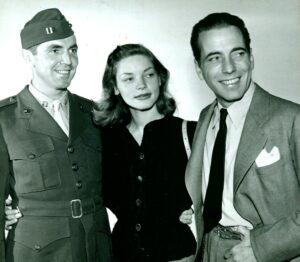
Despite facing a major setback in her career, Bacall was determined to continue acting. Therefore, she decided to return to her roots in theater, and starred in a few Broadway plays. 6 During these times, Bacall was being celebrated for her performances, but was still receiving unfair criticism just because she was aging as all people do. The media seemed obsessed with Bacall’s age and would add pressure to any performers that could not remain “ageless”. 7Bacall landed a role in Applause, which absolutely blew fans away when Bacall was able to show her acting versatility with her musical performances. 8 It was clear that Bacall had not lost her touch like the media claimed. Her success on Broadway led to new film role offers, which she accepted. Today, Bacall is regarded as a cinema feminist pioneer for standing up against a discriminatory belief that had cost a lot of female actors their careers.9
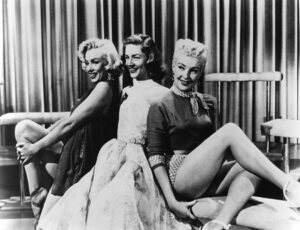
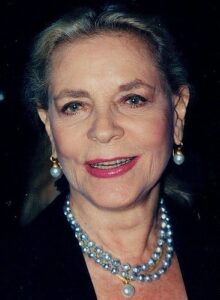
One might think that Bacall’s success story is one of many. However, this is not the case for most actors. Aging actors usually retire or take small roles in low-budget films when they notice that the demand for their work begins to decrease. The idea that “young is better” is one that is easy to spot in Hollywood, but exists in any job industry. As more entertainment projects get released, actors face ageism and sexism daily.10 Actors such as Jennifer Anniston and Meryl Streep have gone on record to mention the struggles that female actors in their 50s face in being offered movie roles.11 The gender gap in acting still exists, and movie opportunities highly favor the men.12 Additionally, now that ageism is becoming a bigger issue, female actors are facing a higher degree of difficulty in terms of staying relevant and finding work.
An empirical study revealed that there is a direct relationship between gender and age, and film opportunities. The study revealed that as actors get older, their movie role offers decrease, as well as their presence in movies that they are cast in. 13 It is important to note, that although male actors do indeed face the same discrimination due to ageism, female actors are affected a lot more. Ageism is a form of discrimination that is ending actors’ careers, and is also contributing to sexism because females are facing the most negative effects from the film industry. Some female actors have been able to avoid ageism, but they are merely outliers in the data due to either their high star power, or acting accolades that keep them finding work. 14
It is crazy to think that a problem that was unjustly negating female actors’ careers, is still active today. This shows that gender inequality is indeed still occurring and that females are still not treated with the respect they deserve. Hollywood and American culture have developed a belief system that actors who do not appear in many movies as they get older, failed at their jobs. 15 This is untrue because actors want to remain relevant and want to continue their acting careers. However, cinema has a theme of replacing “old” figures with new and fresh people. This could be because of the generational gap that is always changing, or the wrongful belief that actors lose talent as they get older. The one thing that is clear is that ageism is a form of discrimination that all actors are facing, and it must stop. Female actors are experiencing the worst effects from it, and if one truly believes in equal rights and considers themselves a feminist, they will want to bring this act to light to ensure that female actors are not being discriminated for their age, or their gender.
- Ball, Jane L. 2022. “Lauren Bacall.” Salem Press Biographical Encyclopedia, January. https://discovery-ebsco-com.blume.stmarytx.edu/linkprocessor/plink?id=eccc62ea-6517-363a-a8e4-08ebecc6b24c. ↵
- “‘Must the Players Keep Young?’: Early Hollywood’s Cult of Youth.” 2006. Cinema Journal 45 (4): 3–25. https://discovery-ebsco-com.blume.stmarytx.edu/linkprocessor/plink?id=2dae8d5c-0163-3a6f-a872-e5ee8ba4d82c. ↵
- Cantu, Maya. 2018. “‘The World Belongs to the Young?’: Age and the Golden Age Diva in Coco (1969) and Applause (1970).” Studies in Musical Theatre 12 (1): 25–41. https://discovery-ebsco-com.blume.stmarytx.edu/linkprocessor/plink?id=de5029f9-a350-3be7-98fc-1cfc3fa64d55. ↵
- Fleck, Robert K., and F. Andrew Hanssen. 2016. “Persistence and Change in Age-Specific Gender Gaps: Hollywood Actors from the Silent Era Onward.” International Review of Law & Economics 48 (October): 36–49. doi:10.1016/j.irle.2016.08.002. ↵
- Lincoln, Anne E., and Michael Patrick Allen. 2004. “Double Jeopardy in Hollywood: Age and Gender in the Careers of Film Actors, 1926-1999.” Sociological Forum 19 (4): 611–31. https://discovery-ebsco-com.blume.stmarytx.edu/linkprocessor/plink?id=0882bf0f-147d-391b-9ecf-5356fe3c3655. ↵
- Ball, Jane L. 2022. “Lauren Bacall.” Salem Press Biographical Encyclopedia, January. https://discovery-ebsco-com.blume.stmarytx.edu/linkprocessor/plink?id=eccc62ea-6517-363a-a8e4-08ebecc6b24c. ↵
- Cantu, Maya. 2018. “‘The World Belongs to the Young?’: Age and the Golden Age Diva in Coco (1969) and Applause (1970).” Studies in Musical Theatre 12 (1): 25–41. https://discovery-ebsco-com.blume.stmarytx.edu/linkprocessor/plink?id=de5029f9-a350-3be7-98fc-1cfc3fa64d55. ↵
- Cantu, Maya. 2018. “‘The World Belongs to the Young?’: Age and the Golden Age Diva in Coco (1969) and Applause (1970).” Studies in Musical Theatre 12 (1): 25–41. https://discovery-ebsco-com.blume.stmarytx.edu/linkprocessor/plink?id=de5029f9-a350-3be7-98fc-1cfc3fa64d55. ↵
- Ball, Jane L. 2022. “Lauren Bacall.” Salem Press Biographical Encyclopedia, January. https://discovery-ebsco-com.blume.stmarytx.edu/linkprocessor/plink?id=eccc62ea-6517-363a-a8e4-08ebecc6b24c. ↵
- Fleck, Robert K., and F. Andrew Hanssen. 2016. “Persistence and Change in Age-Specific Gender Gaps: Hollywood Actors from the Silent Era Onward.” International Review of Law & Economics 48 (October): 36–49. doi:10.1016/j.irle.2016.08.002. ↵
- Fleck, Robert K., and F. Andrew Hanssen. 2016. “Persistence and Change in Age-Specific Gender Gaps: Hollywood Actors from the Silent Era Onward.” International Review of Law & Economics 48 (October): 36–49. doi:10.1016/j.irle.2016.08.002. ↵
- Fleck, Robert K., and F. Andrew Hanssen. 2016. “Persistence and Change in Age-Specific Gender Gaps: Hollywood Actors from the Silent Era Onward.” International Review of Law & Economics 48 (October): 36–49. doi:10.1016/j.irle.2016.08.002. ↵
- Lincoln, Anne E., and Michael Patrick Allen. 2004. “Double Jeopardy in Hollywood: Age and Gender in the Careers of Film Actors, 1926-1999.” Sociological Forum 19 (4): 611–31. https://discovery-ebsco-com.blume.stmarytx.edu/linkprocessor/plink?id=0882bf0f-147d-391b-9ecf-5356fe3c3655. ↵
- “‘Must the Players Keep Young?’: Early Hollywood’s Cult of Youth.” 2006. Cinema Journal 45 (4): 3–25. https://discovery-ebsco-com.blume.stmarytx.edu/linkprocessor/plink?id=2dae8d5c-0163-3a6f-a872-e5ee8ba4d82c. ↵
- “‘Must the Players Keep Young?’: Early Hollywood’s Cult of Youth.” 2006. Cinema Journal 45 (4): 3–25. https://discovery-ebsco-com.blume.stmarytx.edu/linkprocessor/plink?id=2dae8d5c-0163-3a6f-a872-e5ee8ba4d82c. ↵
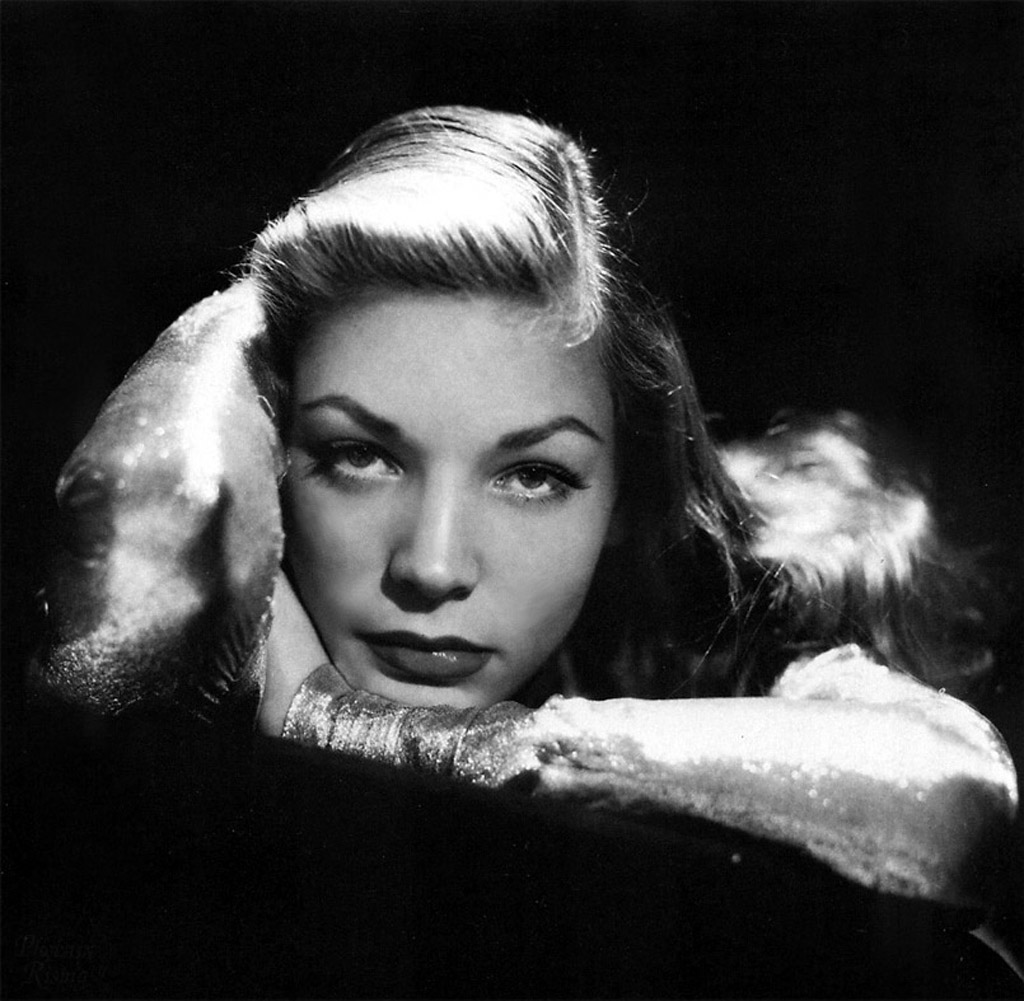


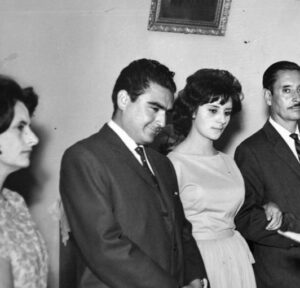
1 comment
Andrew Ponce
Hello Sebastian. This article not only provides new information to others, but also offers a different aspect to view the world from. When talking about inequalities and inequity among people, nobody turns to think about celebrities and how the same issues could impact them. This article can be appreciated by not only other students, but celebrities as well, who feel subject to the topic being discussed. Outstanding perspective.